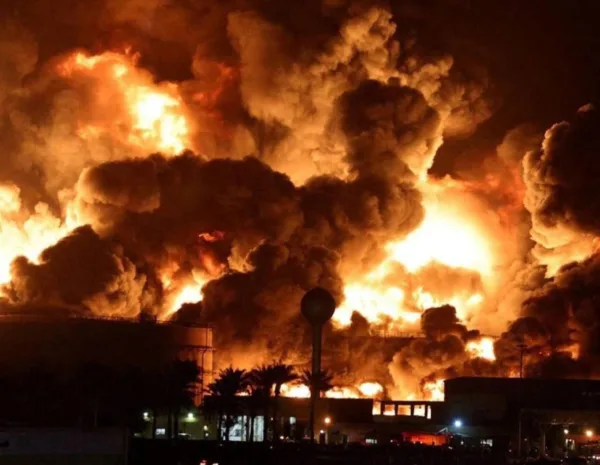On January 12th of this year, Operation Prosperity Guardian, a joint military effort led by the United States and supported by allied nations such as the United Kingdom, Australia, Bahrain, Netherlands, and Canada, commenced a series of airstrikes in Yemen. These airstrikes were specifically aimed at mitigating the actions of the Houthi, an Islamist political and military group. The primary catalyst for these targeted strikes was the Houthi’s attacks on merchant ships passing through the Red Sea.
In response to the Houthi attack on ships in the Red Sea, which itself was triggered by the conflict between Palestine and Israel, US President Joe Biden authorized the airstrikes, while UK Prime Minister Rishi Sunak assembled his cabinet to approve UK participation.
American authorities explained that the aim of the strikes was to reduce the Houthi’s ability to attack ships in the Red Sea, rather than directly targeting Houthi leaders and their Iranian supporters. The Houthi group confirmed casualties, with five people killed and six injured due to the airstrikes. Following January 12th, multiple attacks have occurred in different parts of Yemen.
Who are the Houthis?
In the late 1990s, a group known as the Houthis surfaced in northern Yemen, led by Hussein Badreddin al-Houthi, who was engaged in politics, preaching, and military leadership. The Houthis, composed of tribes dwelling in the mountainous areas near the Saudi Arabian border, follow the Zaidi sect, a minority branch within Shia Islam.
The Houthis identify themselves as part of a coalition opposing Israel, the US, and Western powers, aligning with groups such as Hamas from Palestine and Hezbollah from Lebanon to form a resistance “axis.” Iran plays a pivotal role in supporting the Yemeni Houthis within this coalition.
What has been their role in Yemen?
Tensions between the Houthis and Yemen’s President Ali Abdullah Saleh, who maintained close ties with Saudi Arabia, arose in the early 2000s. In 2009, Saudi Arabia intervened to suppress the Houthi uprising alongside Yemeni government forces. Although a ceasefire agreement was reached in 2010, the conflict with the Houthis had already inflicted significant suffering on the people of northern Yemen.
Following Saleh’s resignation in 2012, strategic collaboration between Saleh and the Houthis enabled the latter to seize control of the city of Sana’a in late 2014. Subsequently, they ousted President Abd al-Rabbuh Mansur al-Hadi, who was initially placed under house arrest before fleeing the country.Upon the Yemeni government in exile’s request, Saudi Arabia and the UAE initiated a military campaign against the rebels. This operation, supported by a coalition of countries including the United States, United Kingdom, and Pakistan, lasted from 2015 to 2022. The intervention resulted in an estimated 400,000 fatalities and the displacement of approximately 4 million people, according to UN figures.
What is the situation like today?
Presently, the Houthis govern 14 of Yemen’s 22 regions, primarily in the north and west, along with the Red Sea coast and major urban centers, retaining control of Sana’a. While the internationally recognized Yemeni government was previously based in Riyadh, some officials have recently begun returning to Aden, a temporary capital in the south.
During the escalation of tensions between Israel and Hamas in the Gaza Strip, the Houthis expressed support for Palestine. Abdel-Malik al-Houthi declared readiness to mobilize hundreds of thousands of troops to help Palestinians.
Escalation and Intervention
Since 2014, Yemen has been trapped in a civil war after the Houthis seized power. Saudi Arabia and the UAE, with support from Western nations, initiated a military intervention in Yemen. However, the Houthis retain control over the capital city, significant urban areas, and the Red Sea coastline.
In April 2022, the United Nations negotiated an agreement on ceasefire between the Houthis and Yemen’s Presidential Leadership Council. Initially scheduled to end in October 2022, the ceasefire was extended until December 2023.
During the October 2023 Israel-Palestine conflict, an alliance formed between Iran-backed forces and the Houthi-led Supreme Political Council to aid Hamas, and they targeted shipping vessels in the Red Sea’s “the Gait of Tears” Strait. Initially focusing on Israeli-linked ships, they later broadened their attacks to include various vessels and armed boats. The United States captured Houthi missiles and drones, subsequently using combat ships to safeguard Red Sea shipping routes.
In early January 2024, the United States and its allies issued a final stipulation to the Houthis, demanding an end to their activities. Several days prior to airstrikes, US Congress members called for a forceful response to the Houthis. A day before the airstrikes, the United Nations Security Council passed a resolution condemning Houthi aggression in the Red Sea, with 11 members voting in favor.
Houthi Perspective and International Reactions
The Houthis believe that there is no justification for the “aggression of the United States and the United Kingdom” because the movement did not pose a threat to international navigation, only targeting “Israeli ships bound for ports in occupied Palestine.” The Houthis also declared that they would continue their attacks on Israeli vessels.
In addition to the countries mentioned by Biden, support for the actions of the United States and the United Kingdom was also expressed by Japan, Denmark, and Germany. On the other hand, countries such as Oman, Russia, Iran, and Türkiye condemned the US and UK attacks, and Saudi Arabia called for “restraint and prevention of escalation.”
Photo by: ABC News








